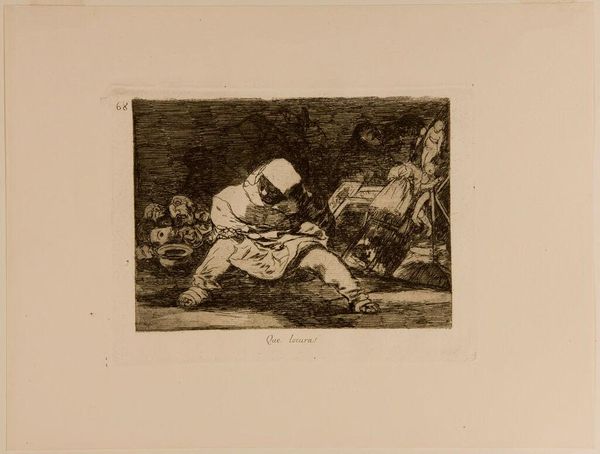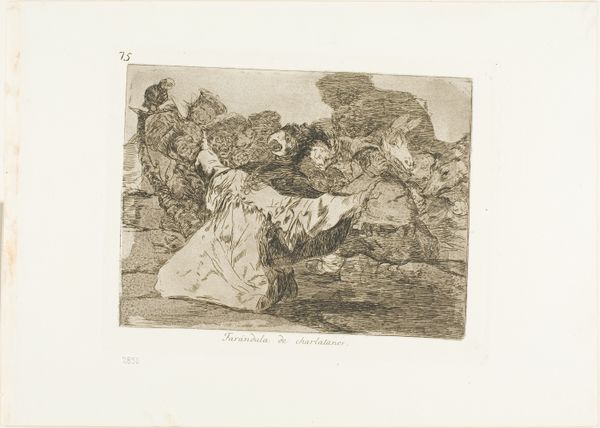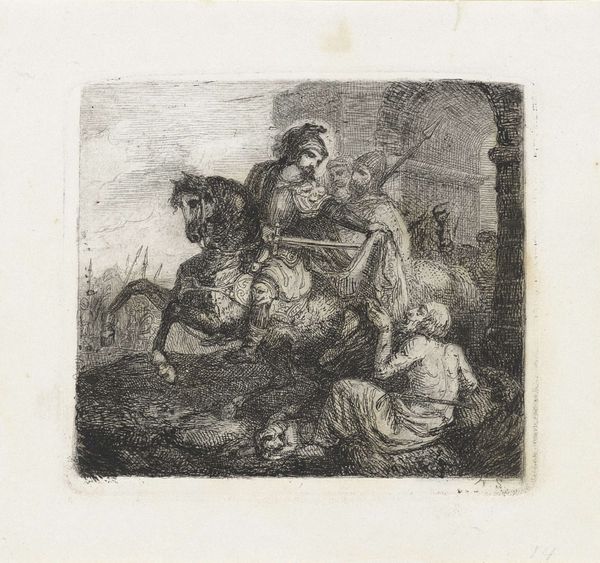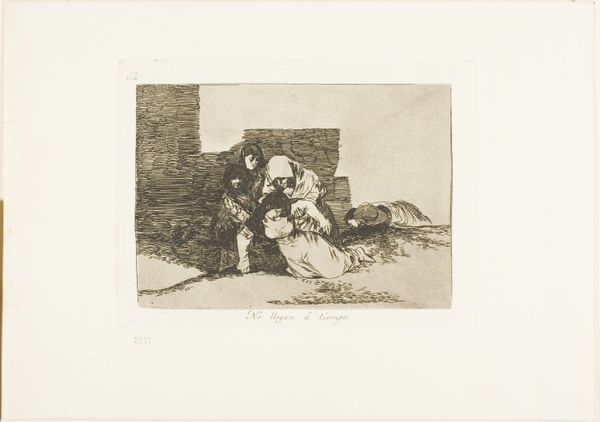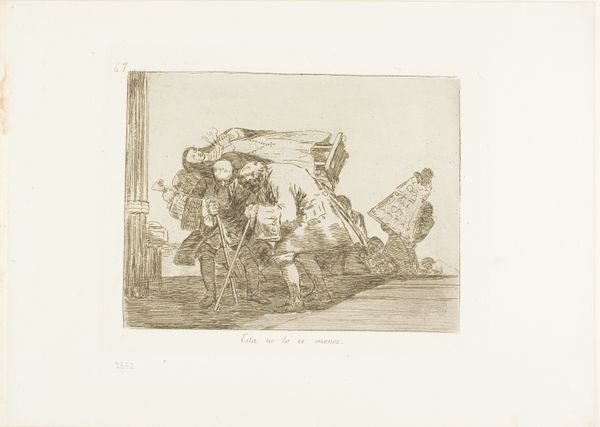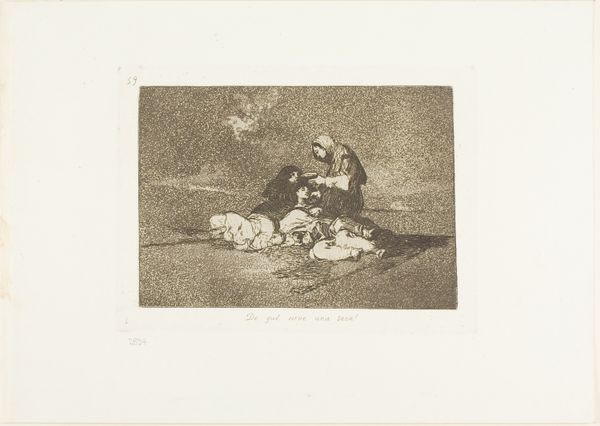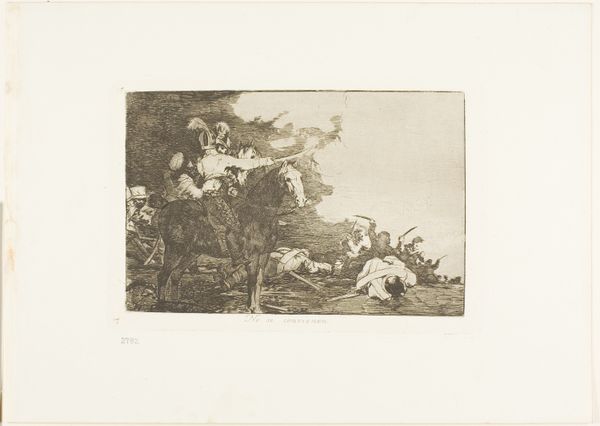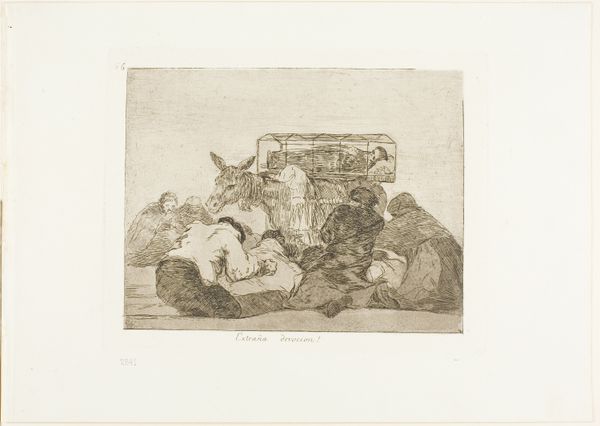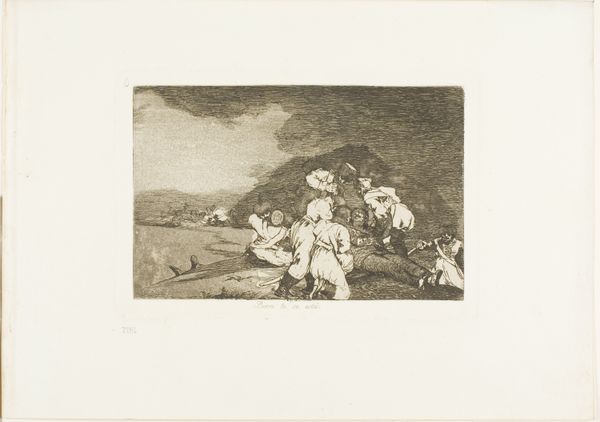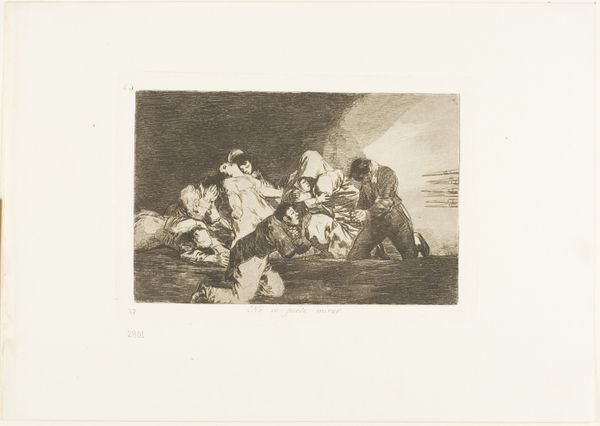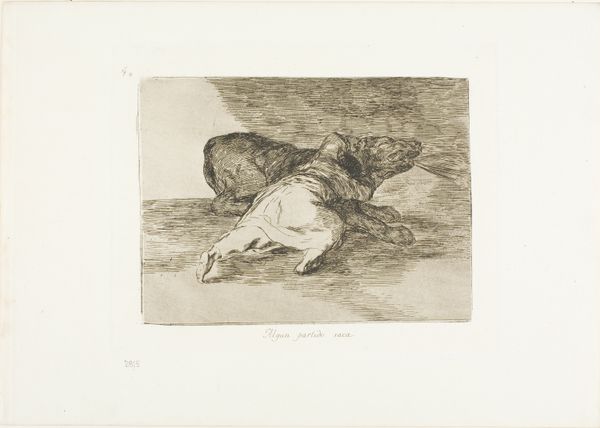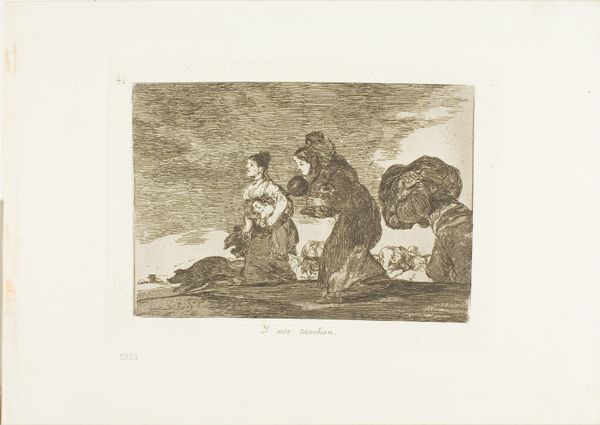
What madness!, plate 68 from The Disasters of War Possibly 1815 - 1863
0:00
0:00
drawing, print, etching, paper
#
drawing
#
narrative-art
# print
#
etching
#
war
#
figuration
#
paper
#
romanticism
#
history-painting
Dimensions: 136 × 190 mm (image); 160 × 220 mm (plate); 240 × 338 mm (sheet)
Copyright: Public Domain
Editor: This is plate 68, "What madness!" from Francisco Goya's *The Disasters of War*, likely created between 1815 and 1863, using etching on paper. The scene is quite disturbing, with the slumped figure and...are those severed heads? How should we interpret such potent imagery? Curator: Goya witnessed immense violence during the Peninsular War. Consider how often the human head, particularly when severed, symbolizes loss of reason, decapitation being the ultimate removal of thought. Doesn't it beg the question: what 'madness' would lead to such brutality? Editor: It definitely suggests a descent into chaos. Is Goya indicting someone specific? Curator: Perhaps not an individual, but a collective madness. The figure seems almost childlike in their despair, or perhaps they are intellectually stunted, overwhelmed. The heads beside them -- like a grotesque offering or harvest -- could symbolize the casualties of reason itself, victims of ideological fervor. Do you see how the seemingly "neutral" title, *Disasters of War,* hints at a profounder loss than just lives? Editor: Yes, it's not just the physical destruction but the collapse of values, the 'madness' of losing our humanity. That's incredibly powerful, especially because Goya refrains from outright judgment, allowing the image to speak for itself. Curator: Exactly. The cultural memory embedded within such stark imagery ensures the past horrors aren't merely historical footnotes. Goya holds up a mirror to the darker potential of humanity itself. A potential, sadly, that continues to resonate through the ages. Editor: Reflecting on this piece really emphasizes how art can be a profound indictment. I'll never see it the same way again.
Comments
No comments
Be the first to comment and join the conversation on the ultimate creative platform.
